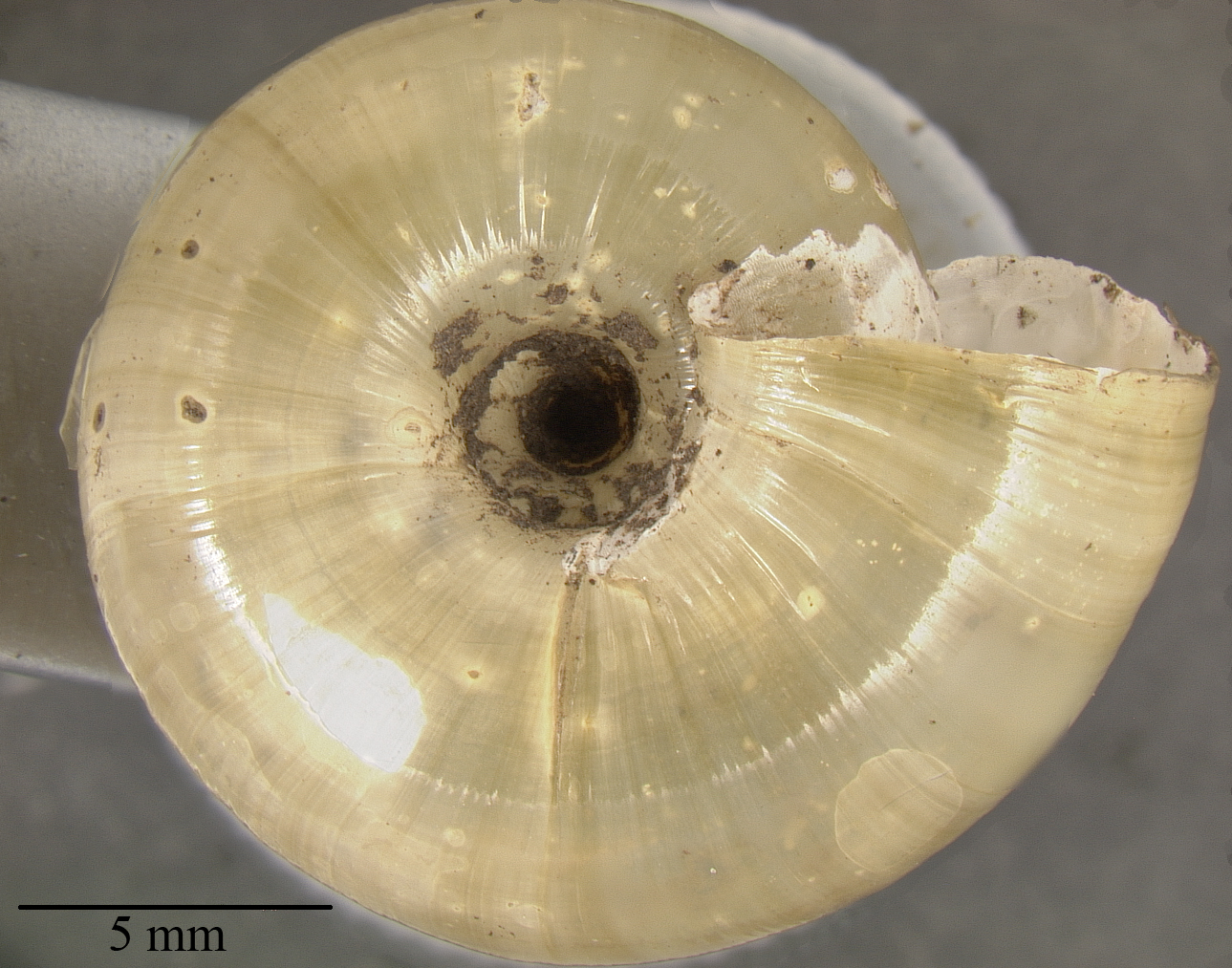

Megomphix hemphilli (W.G. Binney 1879) Oregon megomphix
Megomphicidae, ,Gastropoda, Mollusca, Animalia
Range: In Washington known from Olympia southward in foothills of the Cascade and Coast Ranges.
Identification: Useful in distinguishing Megmophix from Ancotrema/Haplotrema are rate of whorl expansion (lower in Megomphix) and aperture shape (aperture of Megomphix somewhat elongate horizontally and flattened on the base, versus aperture in Ancotrema/Haplotrema somewhat elongated diagonally downward.
Description: Shell translucent with a pale yellow-green tint; full-grown shell 13 to 20 mm; umbilicus wide, 20 to 35% of shell diameter; shell with 5.5 to 6 whorls; young shells have spiral lines on the parietal (inner) wall of the aperture; width of last whorl much more than twice the width of the penultimate whorl; body whitish.
Natural History: Appears to be primarily fossorial in mixed forests where it is associated with bigleaf maple (Acer macrophylum) trees, under which it is found on soil under leaf litter or in rodent burrows.
Conservation Status: The Oregon Natural Heritage Program lists M. hemphilli as "Rare, threatened, or uncommon" throughout its range as well as in Oregon.
Literature Cited:
Bureau of Land Management. 1999. Field Guide to Survey and manage Terrestrial
Mollusk Species from the Northwest Forest Plan. BLM. Eugene, Oregon.
Synonyms:
Etymology: megas – great, omphalos – umbilicus; named for Henry Hemphill, conchologist
________________________________________________________________________________
http://www.or.blm.gov/ForestPlan/Survey_and_Manage/FY99_Surveys/Species_Summaries/species/48-20.htm
According to Appendix J2, Megomphix hemphilli (Oregon megomphix) is restricted to the Olympic National Park, and Olympic and Mount Baker-Snoqualmie National Forests.
The draft Terrestrial Mollusk Survey Protocol (Version 2.0, 10/29/97, p. 43) describes the range of this snail as the Puget Trough of western Washington through the Willamette Valley, Cascade Range foothills, and Coast Range of Oregon. Habitat is within moist conifer/hardwood forests up to 3000 feet in elevation in hardwood leaf litter and decaying non-coniferous plant matter under big-leaf maple trees near rotten logs or stumps. A big-leaf maple component in the tree canopy and an abundance of sword fern on forested slopes and terraces seem characteristic of Megomphix sites.